Heading out the door? Read this article on the new Outside+ app available now on iOS devices for members! Download the app.
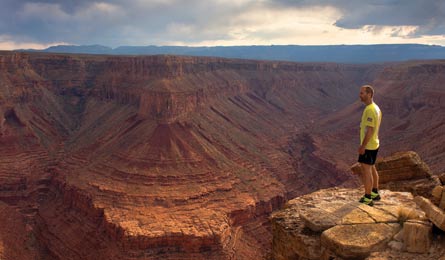
Dennis Lewon at the start. (Photo by Andrew Bydlon)
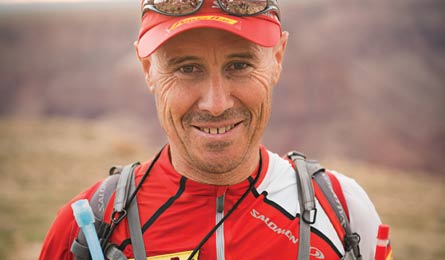
Overall winner Salvador Calvo Redondo (Andrew Bydlon)
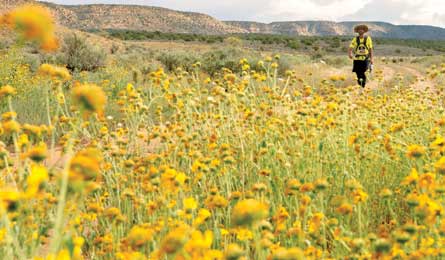
Monsoon-fed wildflowers (Photo by Andrew Bydlon)
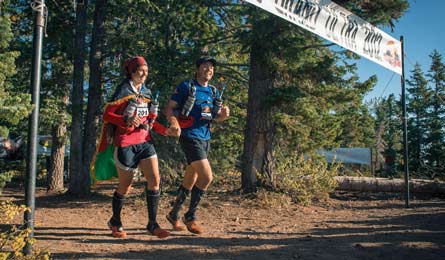
Stephanie Case and Stuart Blieschke (Andrew Bydlon)
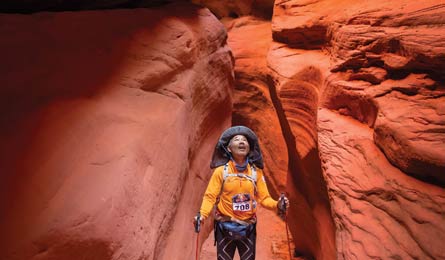
South Korea’s Hun-Ghi Woo (Andrew Bydlon)
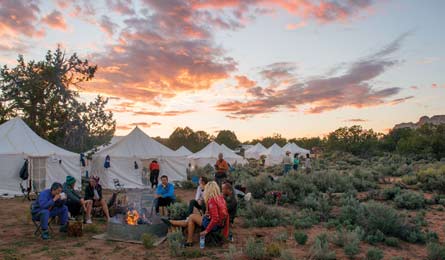
The mobile camp. (Photo by Andrew Bydlon)
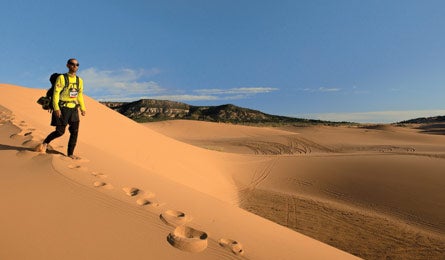
Utah’s coral pink sand dunes state park. (Andrew Bydlon)
I’m not accustomed to people cheering and ringing cowbells every time I stop to fill my water bottle during a hike. And at the first checkpoint on the first day of the 167-mile Grand to Grand Ultra last September, the fanfare struck me as unnecessarily boisterous. But that was before I developed blisters on top of blisters. Before one of my toenails fell off. Before I hobbled into camp with an aching tendon after a 47-mile stage. By then, the cowbells helped keep me going just as surely as the GU and Snickers.
Part ultramarathon, part thru-hike, part mobile party—like the Tour de France for hikers—the Grand to Grand Ultra is a self-supported stage race from the North Rim of the Grand Canyon to Grand Staircase-Escalante National Monument. Over the course of seven days, participants run or hike (or both) about a marathon a day, carrying all of their food, layers, emergency equipment, and sleeping gear (organizers provide tents and hot water each night). Similar events have become popular in places like the Sahara, Gobi, and Atacama deserts. But until the 2012 Grand to Grand, no equivalent race existed in the United States.
Sixty competitors from more than a dozen countries gathered at the starting line on September 23. BACKPACKER Photo Assistant Andrew Bydlon and I joined them; we came to get a dirt-level view of what competitive hiking is like. Our packs weighed 22 pounds at the start, and we breezed through the first few miles of stage one—on the North Rim of the Grand Canyon, in a remote spot few park visitors ever see. After the initial checkpoint (in addition to cowbells, the mandatory check-ins were stocked with friendly volunteers, drinking water, salt tablets, and full-service blister care and first aid), the route followed dirt and gravel roads north, with views of the distant Vermilion Cliffs.
Ten hours and 31 miles later, Bydlon and I crossed the stage one finish line and pulled into camp. Result? We were well behind the fastest runners, who finished in a blazing five hours, and ahead of the slowest hikers. But already we’d learned an essential truth: The Grand to Grand is about pushing your personal boundaries, and the cowbells rang just as loudly for the last finisher as the first. Over the next six days we’d learn plenty more:
Know your goal
Do you want to get in the best shape of your life? Training for—and participating in—a challenge like this will do the trick. And you’ll reap the dividends on all the hikes that come after. As Kim Rich, 47, from Vancouver, WA, said, “Backpacking is what I love to do, and this helps me do it better.” (And he’s racing again this year.)
You’ll make friends
Participants share communal tents, trade stories around a campfire, and help each other through the most grueling miles.
The race challenges everyone
Veterans of other races said this was one of the toughest courses they’d seen, due in part to lots of soft sand and the long first day. Cutoff times are achievable for fit hikers, but you won’t be able to rest until the end of each stage.
Don’t expect wilderness
National parks prohibit events like this, so the course skirts the best backcountry in Grand Canyon, Zion, and Bryce. There were a few highlights, like sandstone hoodoos and a slot canyon, but for the most part we followed dirt roads for mile after mile through the kind of scenery you normally pass on the way to the trailhead. But it’s a fitness event, not a wilderness journey, and the payoff is in sensation, not solitude or scenery. “I have never felt so strong and so weak at the same time,” Bydlon says.
Pack light, but not too light
The most serious runners, like Spain’s Salvador Calvo Redondo (who won the 2012 race with a cumulative time of 34 hours and 10 minutes), started with packs that weighed about 17 pounds. But they made sacrifices (limited food choices, no warm layers for relaxing at night). Our view: A lightweight puffy jacket and camp shoes are worth the extra ounces.
Do it The 2013 Grand to Grand Ultra is September 22-28.
Entry fee $3,200 (includes race shuttles, pre- and post-race food and lodging, and an awards party)
Infog2gultra.com
Win a Free Entry! Want to get in great shape while running or hiking with competitors from all over the world? The Grand to Grand Ultra is giving away one free race entry to a BACKPACKER reader. For contest rules and details on how to enter, go to backpacker.com/g2g. Entry deadline May 20, 2013.
Watch It See video and a slideshow of the 2012 Grand to Grand at backpacker.com/g2g and on the iPad: backpacker.com/ipad.